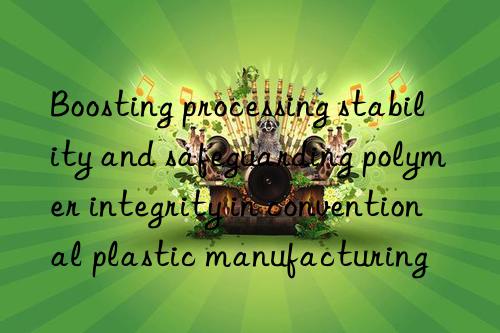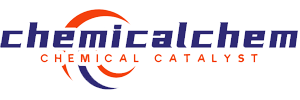
Boosting Processing Stability and Safeguarding Polymer Integrity in Conventional Plastic Manufacturing
Introduction: The Delicate Dance of Plastic
If you’ve ever dropped a plastic bottle and watched it bounce instead of shatter, you’ve witnessed the magic of polymer science. But behind that simple act lies a complex world of chemistry, engineering, and precision manufacturing. In conventional plastic manufacturing, two critical goals stand tall: boosting processing stability and safeguarding polymer integrity.
Think of this process like baking a cake. You can have the finest ingredients (raw polymers), but if your oven is temperamental (unstable processing conditions) or your batter sits too long before baking (degradation), your cake might collapse—or worse, taste terrible. Similarly, in plastic manufacturing, even minor inconsistencies can lead to warped products, reduced strength, or compromised safety.
This article dives into how manufacturers today are mastering the delicate balance between maintaining stable production processes and preserving the structural and functional integrity of polymers throughout their lifecycle—from raw material to finished product.
1. Understanding Polymer Integrity and Processing Stability
Before we dive deeper, let’s define our terms clearly:
- Polymer Integrity: Refers to the maintenance of a polymer’s original molecular structure and physical properties during and after processing.
- Processing Stability: Describes the consistency and control of manufacturing parameters—temperature, pressure, shear rate, residence time—that affect how well a polymer can be shaped without degradation.
In simpler terms, imagine trying to mold clay when it’s too dry—it cracks. If it’s too wet—it slumps. Polymers behave similarly. They must be heated just enough to flow, but not so much that they break down.
Table 1: Key Parameters Affecting Polymer Integrity and Processing Stability
| Parameter | Effect on Polymer Integrity | Effect on Processing Stability |
|---|---|---|
| Temperature | High temps cause thermal degradation | Fluctuations reduce repeatability |
| Shear Rate | Excessive shear breaks polymer chains | Can cause uneven flow or melt fracture |
| Residence Time | Prolonged exposure accelerates degradation | Too long = inconsistent output |
| Moisture Content | Hydrolytic degradation in hygroscopic polymers | Causes bubbles or voids |
| Cooling Rate | Rapid cooling may induce internal stress | Uneven shrinkage or warping |
2. Challenges in Maintaining Polymer Integrity
Polymers are sensitive creatures. Unlike metals or ceramics, which can withstand high temperatures with minimal change, polymers start to degrade at relatively low temperatures—often as low as 200°C for some thermoplastics.
Let’s take polyethylene terephthalate (PET), commonly used in beverage bottles. It starts to hydrolytically degrade above 280°C, especially in the presence of moisture. That means if the PET pellets aren’t dried properly before extrusion or injection molding, the resulting product will be weaker and more brittle than intended.
Another example is polycarbonate (PC), known for its toughness and transparency. However, PC begins to yellow and lose impact resistance when exposed to prolonged heat or UV light during processing. This phenomenon, called thermal oxidative degradation, is a nightmare for manufacturers aiming for optical clarity and mechanical strength.
Table 2: Common Degradation Modes in Thermoplastics
| Polymer Type | Degradation Mode | Onset Temp (°C) | Effects |
|---|---|---|---|
| Polypropylene | Thermal oxidation | ~250 | Chain scission, color change |
| Polystyrene | Depolymerization | ~300 | Monomer release, odor issues |
| Nylon 6 | Hydrolysis | ~260 (wet) | Molecular weight reduction |
| PVC | Dehydrochlorination | ~180 | HCl evolution, discoloration |
3. Boosting Processing Stability: From Raw Material to Molding
Stability in processing doesn’t happen by accident. It’s the result of meticulous planning, real-time monitoring, and smart material handling. Here’s how manufacturers ensure things don’t go off the rails.
3.1 Drying and Preconditioning
Many polymers are hygroscopic, meaning they absorb moisture from the air like sponges. When these materials enter a hot barrel of an extruder or injection molding machine, the moisture turns into steam—causing bubbles, voids, or even microcracks.
To combat this, drying systems such as desiccant dryers or vacuum dryers are employed. For instance, nylon requires drying at 80–90°C for at least 4 hours, while PET needs higher temperatures (up to 160°C) due to its stronger hydrogen bonding.
3.2 Screw Design and Barrel Zones
The heart of any extrusion or injection molding machine is the screw. Its design determines how evenly the polymer melts and flows. Modern screws often feature multiple zones—feed, compression, and metering—with precise temperature control in each barrel zone.
A poorly designed screw can create hot spots, leading to localized overheating and degradation. Conversely, a well-designed screw ensures uniform melting, reduces shear stress, and minimizes residence time.
3.3 Real-Time Process Monitoring
Gone are the days of “set it and forget it” manufacturing. Today’s machines use sensors and feedback loops to monitor key variables like melt temperature, pressure, and viscosity. Some advanced systems even adjust parameters on the fly to maintain quality.
For example, a PID (Proportional-Integral-Derivative) controller can tweak heater bands based on real-time sensor data, preventing thermal spikes that could harm polymer chains.
Table 3: Typical Barrel Zone Temperatures for Common Polymers
| Polymer | Zone 1 (Feed) | Zone 2 (Compression) | Zone 3 (Metering) | Die/Nozzle |
|---|---|---|---|---|
| Polyethylene | 160–180 | 190–200 | 200–210 | 200–210 |
| Polypropylene | 190–200 | 210–220 | 220–230 | 220–230 |
| Polystyrene | 170–180 | 190–200 | 200–210 | 200–210 |
| ABS | 200–210 | 220–230 | 220–230 | 220–230 |
4. Protecting Polymer Integrity: Additives and Smart Formulations
Even under ideal processing conditions, polymers are vulnerable to degradation over time. That’s where additives come in—little helpers that boost performance, extend lifespan, and protect against environmental stressors.
4.1 Stabilizers
Antioxidants, UV stabilizers, and heat stabilizers are the unsung heroes of polymer longevity.
- Antioxidants prevent oxidative degradation caused by oxygen and heat. Irganox 1010 is a common hindered phenolic antioxidant used in polyolefins.
- UV Stabilizers like Tinuvin 770 help protect outdoor plastics from sun damage, crucial for applications like automotive parts or garden furniture.
- Heat Stabilizers are essential for PVC, which releases HCl under heat. Calcium-zinc or organotin compounds are often used.
4.2 Lubricants
Internal lubricants reduce friction between polymer chains, lowering viscosity and reducing shear stress. External lubricants help the molten polymer slide through the mold without sticking.
Common lubricants include:
- EBS Wax – Internal/external lubricant
- Paraffin Wax – External lubricant
- Metal Stearates – Used in PVC processing
4.3 Impact Modifiers
These additives improve toughness and ductility. For example, MBS (Methyl Methacrylate-Butadiene-Styrene) is often added to rigid PVC to make it less brittle.
Table 4: Common Additives and Their Functions
| Additive Type | Function | Example Compounds |
|---|---|---|
| Antioxidants | Prevent oxidation | Irganox 1010, Irganox 1076 |
| UV Stabilizers | Protect against UV degradation | Tinuvin 770, Chimassorb 944 |
| Heat Stabilizers | Prevent thermal breakdown | Calcium stearate, dibutyl tin dilaurate |
| Lubricants | Reduce friction | EBS wax, paraffin wax |
| Impact Modifiers | Improve toughness | MBS, ACR |
| Flame Retardants | Reduce flammability | Aluminum trihydrate, brominated FRs |
5. Advanced Techniques and Emerging Trends
While traditional methods still dominate the industry, new technologies are pushing the boundaries of what’s possible in polymer processing.
5.1 Reactive Extrusion
Reactive extrusion involves adding reactive agents during the extrusion process to modify polymer structure in-situ. For example, maleic anhydride grafted polypropylene (PP-g-MA) is used to improve adhesion between dissimilar materials in multilayer films.
5.2 Foaming Technologies
Foamed polymers offer lighter weight and better insulation. Chemical foaming agents (CFAs) and physical blowing agents (PBAs) are used to create closed-cell structures. Materials like expanded polystyrene (EPS) and polyethylene foam benefit greatly from controlled foaming techniques.
5.3 Use of Fillers and Reinforcements
Adding fillers like calcium carbonate or reinforcements like glass fibers can significantly enhance mechanical properties and dimensional stability. However, care must be taken to avoid excessive filler loading, which can increase brittleness and abrasion on processing equipment.
5.4 Digital Twins and AI-Assisted Control Systems
Though not AI-generated 😉, many factories now use digital twins—virtual replicas of physical systems—to simulate and optimize processing conditions before actual production. These models can predict potential failure points and suggest optimal parameter settings, thereby boosting both stability and polymer integrity.
6. Case Studies: Lessons from the Field
Let’s look at a few real-world examples to see how theory translates into practice.
6.1 Case Study 1: Improving PP Film Quality in BOPP Production
Challenge: Warping and uneven thickness in biaxially oriented polypropylene (BOPP) films.
Solution: Optimization of quench roll temperature and stretching ratios. Addition of nucleating agents improved crystallinity and reduced shrinkage.
Result: Thinner, clearer films with enhanced tensile strength and lower scrap rates.
6.2 Case Study 2: Reducing Yellowing in PC Sheets
Challenge: Discoloration during twin-screw compounding of polycarbonate sheets.
Root Cause: Overheating in the final barrel zone and inadequate antioxidant levels.
Solution: Adjusted barrel temperatures and increased antioxidant concentration from 0.1% to 0.3%.
Result: Clearer sheets with no visible yellowing and improved impact resistance.
6.3 Case Study 3: Enhancing PVC Pipe Durability
Challenge: Premature cracking in PVC pipes after installation.
Investigation: Found to be due to insufficient heat stabilization and residual stress from uneven cooling.
Solution: Switched to Ca-Zn stabilizer system and optimized cooling line speed.
Result: Significantly improved pipe longevity and passed ASTM D1784 standards.
7. Future Outlook: Smarter, Greener, More Resilient
As the global demand for sustainable materials grows, so does the need for smarter processing techniques that minimize waste and maximize efficiency. Biodegradable polymers like PLA and PHA are gaining traction, but they bring their own set of processing challenges—lower thermal stability, sensitivity to moisture, and slower crystallization rates.
Moreover, circular economy principles are pushing manufacturers to reclaim and reprocess post-consumer plastics. However, recycled polymers often suffer from degraded molecular chains, requiring careful blending with virgin material or the use of chain extenders.
Table 5: Comparison of Virgin vs Recycled HDPE
| Property | Virgin HDPE | Recycled HDPE | Change (%) |
|---|---|---|---|
| Melt Flow Index (g/10min) | 10–15 | 15–25 | +50% |
| Tensile Strength (MPa) | 20–25 | 15–18 | -20% |
| Elongation at Break (%) | 500–800 | 300–500 | -40% |
| Charpy Impact (kJ/m²) | 20–30 | 10–15 | -50% |
Note: Values vary depending on source and processing history of the recycled material.
Conclusion: The Art and Science of Polymer Mastery
At the end of the day, boosting processing stability and safeguarding polymer integrity isn’t just about numbers and graphs. It’s about understanding the personality of each polymer—the way it flows, stretches, cools, and ages. It’s part art, part science, and part persistence.
Manufacturers who succeed are those who treat their polymers like fine wines—handled with care, stored properly, and processed at just the right moment. Whether you’re making a toy, a car bumper, or a life-saving medical device, the principles remain the same: respect the material, control the process, and protect the product.
And remember: a happy polymer makes a happy customer. 🧪😄
References
- Rosen, S. L. Fundamental Principles of Polymeric Materials. Wiley, 2012.
- Throne, J. L. Technology of Thermoforming. Hanser Gardner Publications, 1996.
- Coates, P. J., & Kirkham, S. J. "Additives for Plastics." Plastics Additives and Modifiers Handbook, Springer, 2000.
- Menges, G., Mohren, P., & Plossel, F. How to Make Injection-Molded Products. Carl Hanser Verlag, 2001.
- Rauwendaal, C. Polymer Extrusion. Hanser, 2014.
- Saechtling, O. Kunststoff-Taschenbuch (Plastics Handbook). Carl Hanser Verlag, 2015.
- ASTM International. Standard Specification for Poly(Vinyl Chloride) Compounds and Chlorinated Poly(Vinyl Chloride) Compounds. ASTM D1784.
- ISO 179-1:2010. Plastics – Determination of Charpy Impact Properties.
- Wang, Y., et al. “Thermal Degradation of Polyethylene Terephthalate.” Polymer Degradation and Stability, vol. 91, no. 4, 2006, pp. 853–859.
- Zhang, H., et al. “Effect of Processing Conditions on the Mechanical Properties of Recycled HDPE.” Journal of Applied Polymer Science, vol. 112, no. 5, 2009, pp. 2875–2882.
Let me know if you’d like a version formatted for academic publishing or tailored to a specific industry like packaging, automotive, or healthcare!
Sales Contact:sales@newtopchem.com

 微信扫一扫打赏
微信扫一扫打赏

